Welcome to Pet Rescue By Judy!
401 South Laurel Avenue
Sanford, FL 32771
(407) 302-4497
info@petrescuebyjudy.com
Fletcher the Bulldog's Web Page
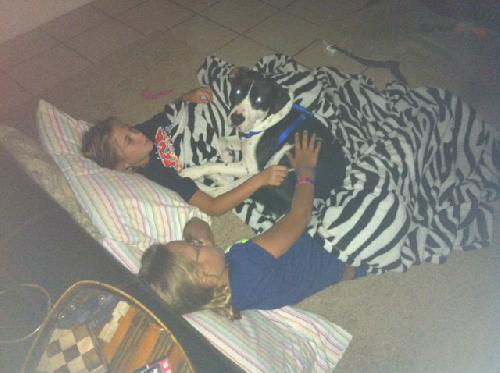
| My Rescue |
| Login to Remember your Favorite Animals and Breeds! |
Fletcher the Bulldog needs a caretaker or foster!
Won't you consider helping him get a new start?
Won't you consider helping him get a new start?
Name: Fletcher the Bulldog
Adoption Fee: $175
Species: Dog
Breed: American Bulldog (short coat)
Color: Black and White
Sex: Male (neutered)
Current Size: 52 Pounds
General Potential Size: Large
Current Age: 16 Years 11 Months (best estimate)
Activity Level: Moderately Active
Indoor or Outdoor: Indoor Only
Good with Dogs: Yes
Good with Kids: Yes
Microchipped: Yes
Description:
Fletcher was rescued from a kill shelter where he came in with an embedded choke chain that had to be removed from his neck with bolt cutters. This typically happens when the owner puts a collar/chain on a young dog and never bothers to check it. As the dog grows, the collar/chain tightens and skin begins to grow around it. It is unbelievable that an owner would not notice it, however, if the dog is kept outside or tethered 24-7, it can and unfortunately does happen. Fletcher may have a physical scar across his neck and some extra skin to show for it, but he is a sweet, loving boy who holds no grudges. Fletcher has a wonderful personality and he is truly in need of a great home!
Volunteer Update 11/28
Fletcher is one of my favorite dogs at the shelter! He is such a good boy and has such a great personality. He has a very even temperment and gets along great with other dogs. He loves to go on walks and doesn't really pull. We keep him on a body harness because of his former neck injury. He is treat motivated and likes eating doggie cookies, which will go a long way in training. Fletcher has been in the shelter awhile, and came from another shelter after he was obviously not well cared for. He gets attached to people fairly quickly and is so eager to please and be loved. Won't you give this sweet boy a chance? He is crate trained and would make a great family dog!
Like many dogs in the South, Fletcher is heartworm positive, but don't let that stop you from adopting a great dog. We are treating him with monthly heartworm preventative, our preferred method. Most heartworm positive dogs go on to lead long and healthy lives.
According to www.dogbreedinfo.com, early Bulldogs were used in the bloody sport of bull bating. Some of these dogs emigrated with their masters from England to America. Eventually the English Bulldog was bred down in size and his personality was softened, but the American version remained a larger, fiercer dog. The American version has longer legs and more speed and agility than the English show dog. Thanks to the efforts of John D. Johnson of Summerville, Georgia the American Bulldog exists today. After he returned from WW II he was disappointed to find that, like the English Mastiff, they were almost completely extinct. He then decided to gather the best he could find from all across the rural south and bring them back from the brink of extinction. He has been breeding these dogs longer than anyone else in the world and his father bred them before him. He is an old man now (in his 80's) and these dogs have always existed in his family. He is the sole reason why they exist today. If it were not for his efforts they surely would be gone. He has been breeding them non-stop since then. The American Bulldog has also been used as a guard and in hunting bear, wild boar, squirrel and raccoon. They have even been trained to drive cattle and guard stock from predators. Farmers prize these dogs for their stamina, protectiveness, intelligence and working abilities. Some of the American Bulldogs talents are hunting, watchdogging, tracking, weight pulling, and guarding. An American Bulldog should never be confused with uniquely different breeds such as the American Staffordshire Terrier or the American Pit Bull Terrier. The American Bulldog is a brave and determined, but not hostile dog. Alert and self-confident, this breed genuinely loves children. It is known for its acts of heroism towards its master. These dogs have fought wild dogs, bulls and even fire. It is said "fighting off one of these dogs is like fighting an animal that possesses an alligator's head and a python's body." Yet when called off by their handler, they immediately obey. No wonder they are said to have "true grit, true devotion and true love." Because of its strong protective instincts, the American Bulldog should be well-socialized and obedience trained at an early age. Some may be aggressive with other dogs and reserved with strangers. They need to be around people to be truly happy. This breed tends to drool and slobber. They have a life expectancy of up to 16 years.
Other Pictures of Fletcher the Bulldog (click to see larger version):
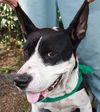 209k |
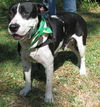 60.6k |
 20.9k |
 29.4k |
 74.1k |
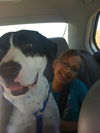 56.7k |
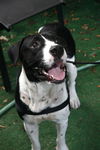 46.6k |
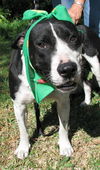 46.5k |
 236.8k |
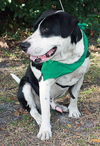 215.3k |
 67.4k |
 34.4k |
 21k |
 29.6k |
 30.2k |
 37.5k |
 20.6k |
 61.8k |
Copyright © Pet Rescue by Judy





